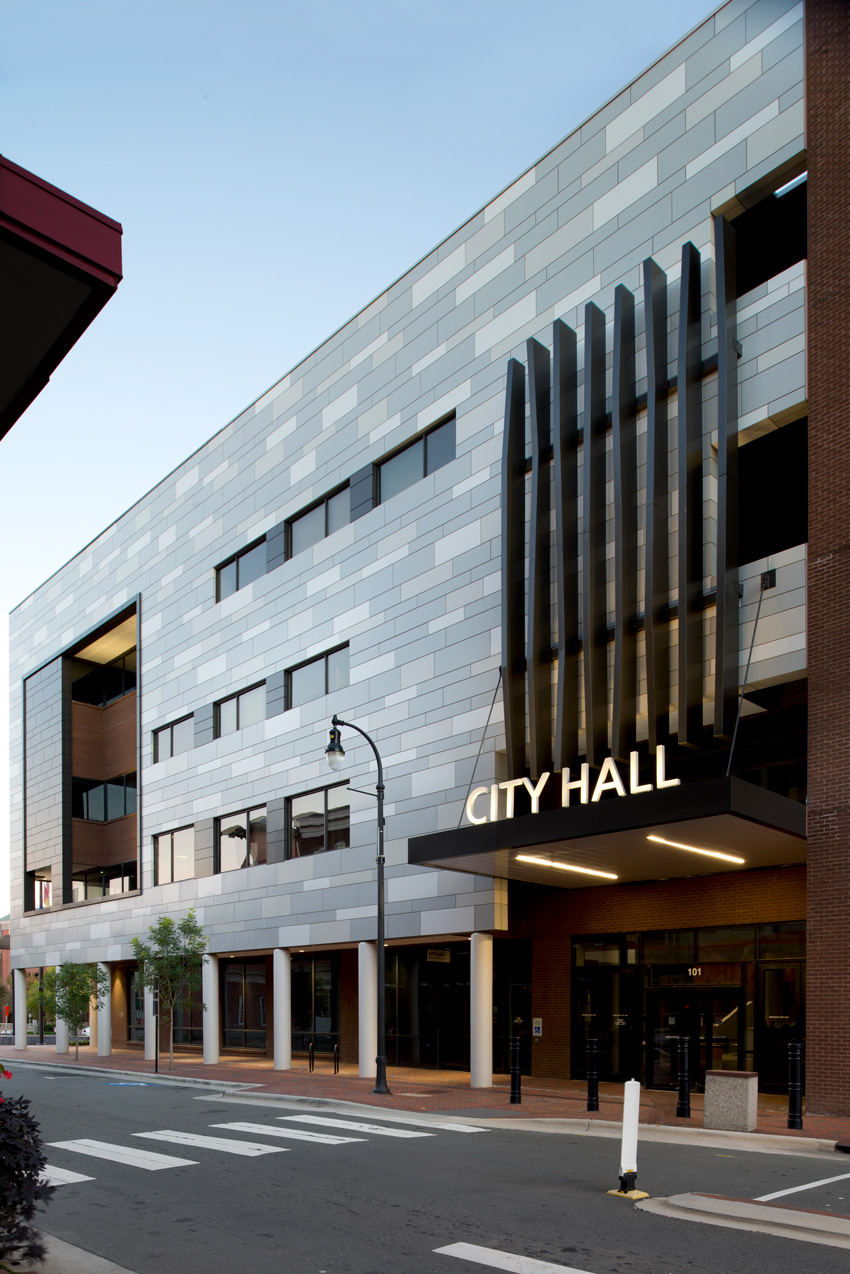Form and Function

Photo courtesy Dri-Design, Inc.
The University of Texas at Tyler’s College of Business and Technology features a single-skin metal exterior. Understanding what specifications mean and how products are tested ensures a best fit for materials.
TESTING TO CERTIFY FORM AND FUNCTION
Product testing offers design professionals a vital, independent standard against which to evaluate and judge products. For products under consideration as both an exterior wall and rainscreen, there is a relatively new testing standard developed by the American Architectural Manufacturers Association (AAMA). Two different tests were developed:
- AAMA 508-07 (originally 508-05): Voluntary Test Method and Specification for Pressure Equalized Rain Screen Wall Cladding Systems; and
- AAMA 509-09: Voluntary Test and Classification Method of Drained and Back-Ventilated Rain Screen Wall Cladding Systems.
Both test methods use a standard specimen size and configuration of an 8-foot by 8-foot square mockup, with at least one vertical and one horizontal joint between panels. Both test methods allow for testing with a generic air and water barrier (AWB): a clear, plastic sheet, such as Lexan, which allows for visual observation from the interior side of the specimen. Both test methods require purposely designed defects, such as holes, in the generic AWB, to simulate imperfections that will most likely occur in the field. Both allow for the option of additional structural testing when using the actual AWB intended for a given job or system design.
AAMA 509-09 is used for evaluation of drained and back-ventilated systems. There are four essential design requirements for drained and back-ventilated systems evaluation:
- Water entry through the entire wall system (penetrating the AWB) shall be prevented.
- The AWB shall be designed to provide the primary weather protection.
- The system shall be designed to manage and drain any water entering the cavity behind the cladding and sufficiently vented to allow the cavity to dry.
- If water vapor diffuses from the building interior through the AWB and into the drained and back-ventilated system cavity, it shall be permitted to be vented and/or drained out to the exterior.
AAMA 509-09 pass/fail criteria is direct. The key criteria for the AAMA 509-09 test is that water penetration is not allowed through the entire wall system. Water is expected to hit the AWB.
Formerly AAMA 508-05, AAMA 508-07: Voluntary Test Method and Specification for Pressure Equalized Rain Screen Wall Cladding Systems is used to evaluate pressure-equalized rain screen systems. There are four essential design requirements for pressure equalized systems:
- Water entry through the entire wall shall be prevented.
- If water vapor diffuses through the interior wall construction (from the inside out), it shall be vented to the exterior.
- The actual AWB (when tested) shall be designed to resist the full positive and negative wind load.
- The system shall be designed such that it does not trap or hold concealed water and is able to control rainwater.
AAMA 508-07 pass/fail criteria is more definite than the criteria of 509-09. Failure is defined as either water mist or droplets appearing in excess of 5 percent of the AWB surface and/or water running in a continuous stream down the AWB surface. Additionally, the assembly is also tested to determine if it behaves as a pressure-equalized system, based on the lag time between the cyclic wind pressure and the cavity pressure, which is not to exceed 0.08 seconds. Finally, the maximum differential between the cyclic wind pressure and the cavity pressure, per AAMA, shall not exceed 50 percent of the maximum pressure when tested at 25 psf for 100 cycles.
A little definition behind the numbers used in the tests helps to clarify how the test numbers translate into real-world conditions. The test numbers are a base line. The unit of 6.24 pounds/square foot simulates about a 50-mph wind; 15 pounds/square foot is roughly equal to an 80-mph wind. Depending on building requirements, additional testing for air, water, structural, and hurricane may be necessary. For exterior assemblies, the most commonly applicable additional tests include:
- ASTM E 283: Air Leakage;
- ASTM E 1233: Pressure Loading;
- ASTM E 331: Water Penetration;
- ASTM E 330: Structural Performance;
- AAMA 501.1: Dynamic Water; and
- Miami-Dade Hurricane Approval: High Velocity Hurricane Zone (HVHZ): Comply with ASTM E8/E8M test methods and performance requirements of Florida Building Code and Miami-Dade County test protocols TAS-202 and TAS-203 for HVHZ with at least plus 61 psf to minus 80 psf design pressure rating.
Translating Testing Results for the Best Product Decisions
While testing offers an invaluable source of third-party, independent information, it is still important to understand the ‘what’ and the ‘how’ behind each test and the results presented by manufacturers. Multiple products may earn a passing grade; how those systems were designed for the test is just as vital to understand. Independent testing agencies will test a product in any manner the manufacturer presents it to them, regardless of the standard details for a system. However, the testing agencies are required to report everything included in the assembly in the test documents. This means the specifier should ask to review the actual testing documents when comparing products. Design professionals and specifiers must be alert to details like hidden butyl tapes or sealants that may be used during testing but are not in the manufacturer’s standard details. Items that are absent from the manufacturer’s standard details but were present in testing increases the likelihood that components used in testing will fail to make it into project details, leading to performance issues.

Photo courtesy Dri-Design, Inc.
As fire has become a bigger concern for today’s buildings, new fire codes and standards are being strictly enforced in more and more areas, including the 901 East Sixth Street project in Austin, Texas.










